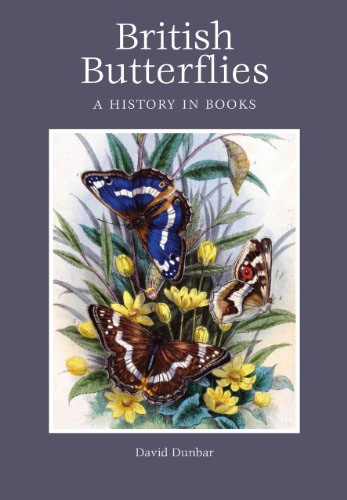 |
by David Dunbar
This book is the first to trace the 400-year history of books about British butterflies. From Thomas Moffett's The Theatre of Insects of 1634, through to the mass of modern-day guides and scientific works, some 600 titles are featured. The whole spectrum of butterfly-related literature is covered, from the earliest discovery and naming of butterflies in the British Isles to contemporary scientific works on ecology and conservation. The book is illustrated with reproductions of fine prints from old butterfly and insect books, many in colour, along with photographs showing styles of typical bindings and book design.
David Dunbar is a lepidopterist, writer, photographer and antiquarian bookseller. He has been a Trustee and Director of Butterfly Conservation and a member of the Amateur Entomologists' Society. His previous publications include Saving Butterflies: A Practical Guide to the Conservation of Butterflies in Great Britain and Ireland (1993) and he was editor of Glorious Butterflies and their Flora (1993).
If I were to choose one person to write a "book about butterfly books" then David Dunbar, proprietor of Aurelian Books, would be at the top of my list. I first became acquainted with David when I was looking for a hard-to-come-by copy of the original Butterflies of Britain and Ireland by Jeremy Thomas and Richard Lewington. He not only quickly tracked down that particular book, but has provided me with much advice over the years with regard to new, secondhand and, especially, antiquarian books on my favourite subject.
I was therefore delighted when David told me he would be documenting the history of books dedicated to British butterflies, since there is an awful lot of material out there, some of historical significance that is of particular interest to me. Having now read this book cover-to-cover I can tell you that it's original, well-written and, above all, engaging - covering a "selection of material based largely on its originality, significance, or interest". There simply isn't any other book like it. This 165-page tour de force covers all of the early works, from Thomas Moffet's Insectorum sive Minimorum Animalium Theatrum (Theatre of Insects) published in 1634, all the way up to the most-recent of works, even mentioning Thomas and Lewington's second edition which was published earlier this year. As such, it is bang up to date, and through its pages demonstrates a growing understanding of our British butterflies over time. The book also documents the evolution of publishing processes, such as techniques for printing where the woodcuts and hand-colouring used in the earliest publications have ultimately been replaced by the bits and bytes found in the IT world of desktop publishing.
The book itself is divided into 5 sections, each liberally sprinkled with plates from the books being discussed. The book first introduces "butterflies and books" before we are led through the ages, starting with the 17th and 18th centuries, "The Golden Age of Discovery", where, in addition to the books discussed, we're given a sense of what it must have been like to have lived in certain periods, when butterflies were much more abundant and collecting the norm. How things have changed. We're also given insights into some of the more-debatable book content - why, for example, was the Purple-edged Copper included in Merrett's Pinax Rerum Naturalium Britannicarum? Was it considered a native species? We shall never know - but intriguing nonetheless! Indeed, the book provides a veritable history lesson - with organisations such as the Aurelian Society and the Royal Entomological Society discussed, along with topics such as science and systematic study.
There is equally-broad coverage of more-modern works, no mean feat given the numerous publications that have been produced from the 20th century onwards. As well as the books from the likes of Frohawk and E.B.Ford, even more-recent literature is mentioned - including the WildGuides publication, Britain's Butterflies, Newland's Discover Butterflies in Britain, the Millennium Atlas of Butterflies in Britain and ireland and Heath and Emmet's The Moths and Butterflies of Great Britain and ireland. These and many many others are all mentioned and put in context of their contribution to our collective knowledge.
All in all, this is a unique book that catalogues, in an engaging manner, all of the significant works on British butterflies (and moths, come to that) and if you're at all interested in the history of this well-studied group of insects, then this is the book for you.
You can obtain signed copies directly from the author at Aurelian Books. The price is £34 + £3 P&P.